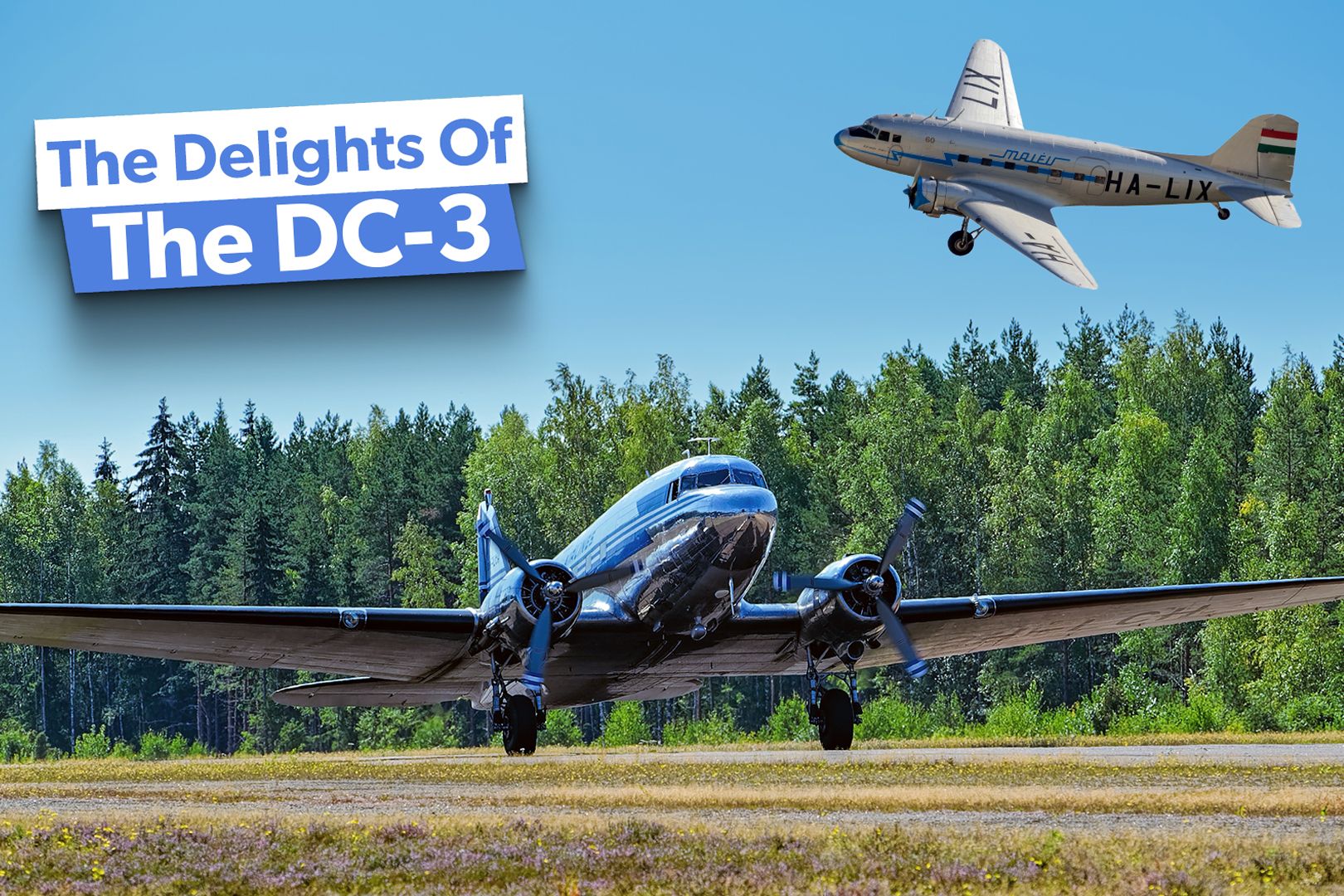Summary The DC-3 revolutionized air travel, enabling non-stop flights between major cities and reducing travel time and costs significantly. The DC-3 was the first aircraft to make money solely from passenger flights, shifting the dynamics of commercial airlines. Despite being over 80 years old, the DC-3 remains operational globally, showcasing its enduring legacy, robust construction, and adaptability.
The Douglas DC-3 is not just an airplane but one of the most influential and enduring icons in aviation history. Introduced in the mid-1930s, this aircraft revolutionized commercial air travel and military logistics, setting new standards for reliability, efficiency, and comfort. The DC-3's development was driven by a clear need within the aviation industry for an aircraft that could bridge the gap between the slow, costly, and often impractical flights of the early 1930s and the emerging demand for faster, more efficient, and profitable air travel.

All there is to know about DC-3. According to the Smithsonian Magazine , before the DC-3, air travel was arduous and expensive, often requiring multiple stops, plane changes, and extensive travel times. For instance, a journey from New York to Los Angeles could take over 25 hours and necessitate numerous layovers.
The introduction of the DC-3 marked a significant shift, enabling non-stop flights between major cities like New York and Chicago, drastically reducing travel time and costs. This capability was revolutionary, making air travel a viable option for the masses, not just the wealthy elite. 1 A revolutionary design born from necessity The aircraft took-off in 1935 The DC-3 was developed in response to the need for a larger, more comfortable, and profitable aircraft for commercial airlines.
Before the DC-3, air travel was luxurious yet cumbersome, often requiring multiple stops and plane changes. The development of the DC-3 was driven by a collaboration between Douglas Aircraft and American Airlines, led by C.R.
Smith, who insisted on a design that would cater to passenger comfort and operational efficiency. The plane had been grounded for over a decade before it returned to the sky This collaboration led to a series of innovations, such as the right-side passenger door, which prevented passengers from being buffeted by the propeller wash during boarding. The result was an aircraft that could carry 21 to 32 passengers, had a more excellent range, and could operate profitably by carrying passengers alone—something no aircraft before could claim.
2 The first airliner to make some money American Airlines was the commercial launch customer One of the most significant contributions of the DC-3 was its ability to make air travel profitable for airlines. Before the DC-3, airlines struggled to profit from passenger flights alone, often relying on mail contracts and cargo to break even. The DC-3 changed this dynamic by offering speed, range, and passenger capacity, allowing airlines to cover long distances with fewer stops and attracting more passengers.
The first five airlines to fly the Douglas DC-3 were: American Airlines : Launched the first commercial flight of the DC-3 on June 26, 1936. United Airlines : Also an early adopter of the DC-3, quickly integrating the aircraft into their fleet after American Airlines. Eastern Air Lines : One of the initial airlines to fly the DC-3, capitalizing on its efficiency and capacity.
TWA (Transcontinental and Western Air) : Adopted the DC-3 for its “Skysleeper” service, using the DST variant designed for overnight flights. Delta Air Lines : Purchased its first DC-3s in 1940, becoming one of the primary operators during and after World War II According to the Delta Flight Museum , it was the first aircraft that could make money solely by carrying passengers, a feat that helped to solidify its place in aviation history. By 1940, the DC-3 accounted for 80% of the world's commercial airline traffic.
3 An engineering marvel 3,500 drawings were required to create the first prototype The development of the DC-3 was a significant engineering achievement, especially considering the era's technological limitations. The design process involved over 400 engineers and drafters who worked tirelessly to produce more than 3,500 detailed drawings. Remarkably, all this was accomplished without modern computers or sophisticated testing equipment.
Engineers relied on data from the DC-1 and DC-2 and used their ingenuity to ensure the DC-3 was robust and reliable. The final design was so successful that it required only minimal changes from the DC-2, yet it was almost entirely a new aircraft. 4 A versatile workhorse in war and peace 10,000 C-47's were produced The DC-3's versatility is one of the key reasons for its enduring legacy.
According to Disciples of Flight , during World War II, the military version of the DC-3, the C-47 Skytrain, became a crucial asset for the Allied forces. Over 10,000 C-47s were built and used for various missions, including troop transport, cargo delivery, and paratrooper drops during D-Day. The Lisunov Li-2 was the licensed Soviet production of the Douglas DC-3 and saw widespread use in World War Two.
The aircraft's rugged design allowed it to operate in challenging environments, from rough airstrips to icy conditions, making it indispensable during the war. After the war, many surplus C-47s were converted back into civilian DC-3s, contributing to the plane's continued use in commercial aviation. 5 Still flying after eight decades 164 DC-3s continue to fly One of the most remarkable aspects of the DC-3 is its longevity.
Over 80 years after its first flight, DC-3s are still in operation worldwide . These planes continue to serve in various roles, including cargo transport, passenger flights, and even as beloved participants in airshows. The DC-3's robust construction, adaptability, and ease of maintenance have ensured that it remains a viable aircraft even in the 21st century.
Its ability to operate on short, unimproved runways and in harsh conditions has only added to its legendary status. One of the world's last remaining active DC-3s is stationed at Orly Airport near Paris and bears Air France's historic livery..



















